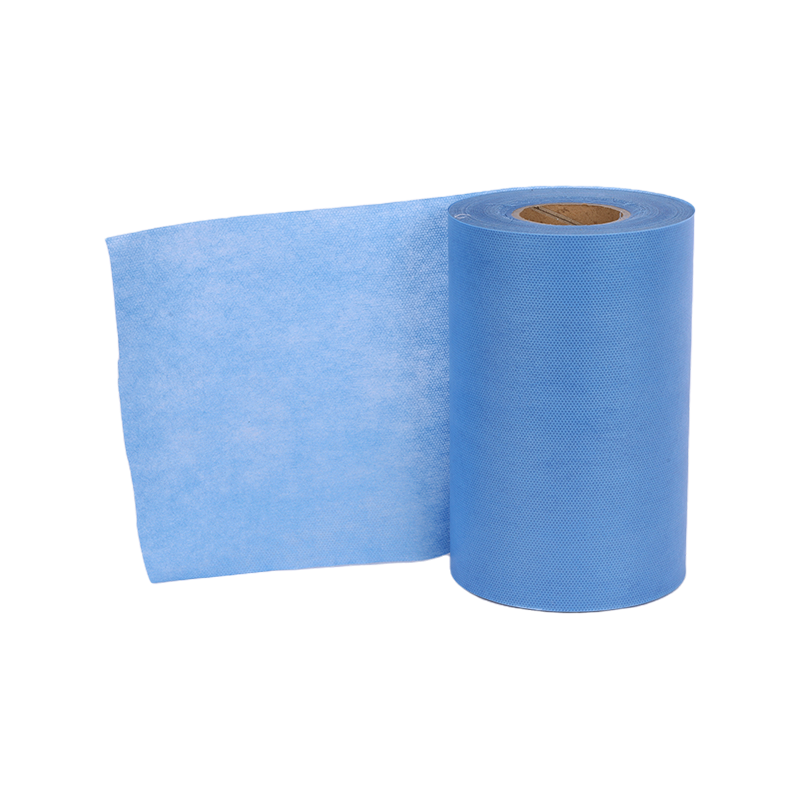Filmed Non-Woven Fabric
Filmed Non-woven Fabric is a material used in a wide variety of applications. Its benefits include being strong and durable and can be easily cleaned. It is also resistant to heat, and ions, and is a great option for medical applications. However, with increased demand, some manufacturers are creating subpar-quality non-woven fabrics. Therefore, consumers should look for companies with a long history of manufacturing non-woven fabrics.
High-pressure water-jet softening process
The high-pressure water-jet softening process is a recent development that softens filmed non-woven fabric. It consists of several steps, including the application of a high-pressure water jet. The treatment process reduces the fabric's bending modulus by up to 25%, which is a measure of fabric softness. The bending modulus can be calculated by dividing the drape value by the fabric thickness. The process can also be used in combination with other treatments to improve fabric softness.
The process can increase the fiber density in the fiber web, thereby strengthening the entanglement of fibers in the fabric. This increases the resistance of the fabric to "pilling" (breakage of internal fibers). However, the denier of the fiber can affect the softness of the resultant fabric.
Nonwoven fabrics, such as filmed non-woven fabrics, have many advantages. For example, their high ion permeability makes them ideal as insulators. However, these nonwovens are not thin enough to provide electrical insulation. Therefore, they need to be layered with a porous inorganic layer to close the larger gaps. Research has been conducted on different materials and coatings to enhance their insulation properties.
The surface resistance values of PE film and PP non-woven fabrics were determined using a hot-melt adhesive. The results showed that these materials exhibited a decrease in thermal stability over a wide temperature range, but remained stable below 200 degrees Celsius. The compounded adhesives also improved the antistatic properties of the non-woven fabric. The antistatic effects were correlated with the varying concentration of antistatic agents in the compound adhesive.
Ion permeability
Ion permeability is the ability of a material to passion. It is measured in units of coulomb per second. The driving force for potassium is 7 mV, whereas the driving force for sodium is -133 mV. It is also measured as an electrical conductance in the Siemens units, which is one coulomb per second per volt.
Ion permeability is an important property for a filmed non-woven fabric used in electrolyte batteries. The film on the fabric should have a high percentage of glass fibers with an average fiber diameter of 3 gyms or less. Fibers that are larger than that will have many pin holes and decrease the strength of the film.
Durability
Filmed non-woven fabrics are used for various applications in the consumer durables sector. Some of their uses include mattress padding, towel and tablecloth linings, carpet backing, and more. Filmed non-wovens are also widely used in the industrial sector for a variety of applications, including filters, insulation, and packing materials. Some of their uses are also found in the infrastructure industry, such as roadbed stabilization sheeting, geotextiles, and roofing materials.
Filmed non-woven fabrics can be produced with a variety of technologies. These processes can provide unique properties and reduce overall manufacturing costs compared to conventional woven fabrics. In addition, nonwoven fabrics can be enhanced with coating treatments. Conventional coating processes require large quantities of chemicals, water, and energy. Additionally, they create wastes that must be disposed of.
Cost
Non-woven fabrics are a popular choice for many purposes. Compared to other fabrics, they can be more environmentally friendly. They're also preferred in industries and fields where disposable products are popular. Hospitals and nursing homes often use them instead of conventional materials, as they can easily be disposed of.
The cost of nonwoven fabrics varies according to the type of fiber used to make them. Non-woven fabrics are typically made of filament or new, first-quality fibers, but can also be made with staple fibers. The cost of the fibers used to make these products depends on their characteristics, including their length, generic group, and type.
 Filmed non-woven fabricLaminated Non-Woven Fabric Is A Product Formed By Coating A Non-Woven Fabric With Plastic Heated To A Hot Melt State At High Temperature And Cooling. Has A Good Isolation Effect.
Filmed non-woven fabricLaminated Non-Woven Fabric Is A Product Formed By Coating A Non-Woven Fabric With Plastic Heated To A Hot Melt State At High Temperature And Cooling. Has A Good Isolation Effect.
Filmed Non-Woven Fabric Is A Type Of Fabric Made By Laminating A Layer Of Polyethylene Or Other Film Material To A Layer Of Non-Woven Fabric. This Process Creates A Fabric That Is Strong, Waterproof, And Tear-Resistant. The Film Layer Provides A Barrier Against Liquids, And The Non-Woven Layer Gives The Fabric A Soft, Flexible Texture. It Has Good Hydrophobicity, High Strength, And Good Oil Resistance, And Can Be Applied To Many Industries Such As Protective Films And Coating Textile Flax Fabrics.
Filmed Non-Woven Fabric Is Made By A Unique Process That Combines Two Layers Of Film, Which Are Wound Through A Heating System And Then Bonded By Pressure. The Resulting Composite Material Is Light In Weight, Extremely Strong, And Stands Up Well To The Most Demanding Of Applications.
